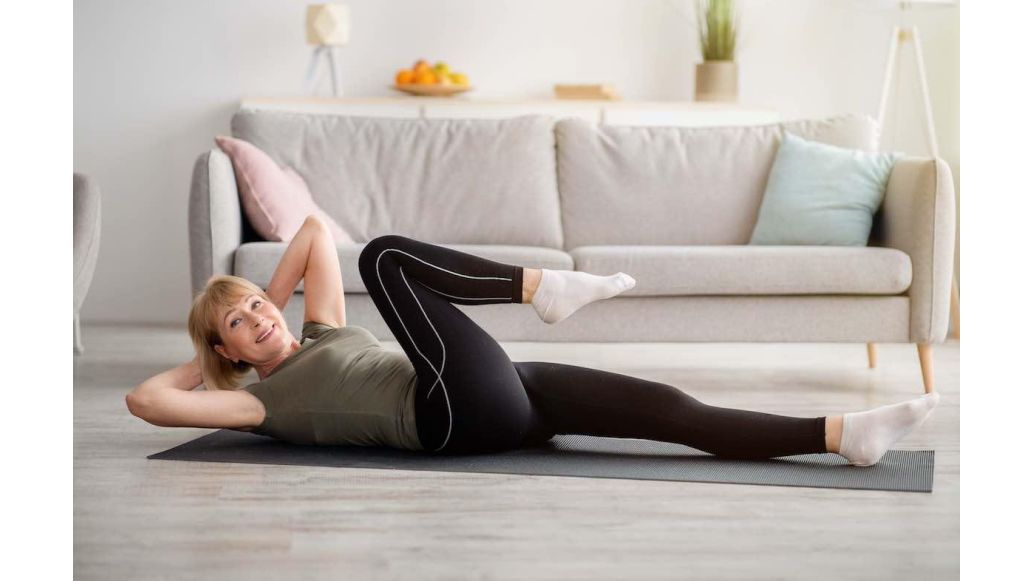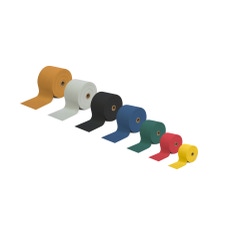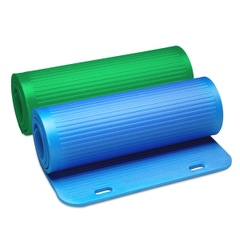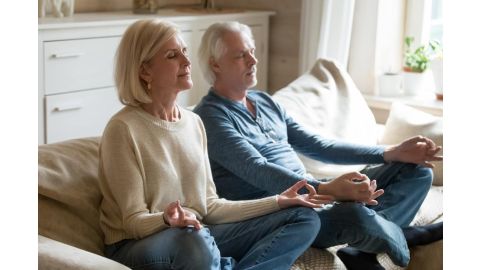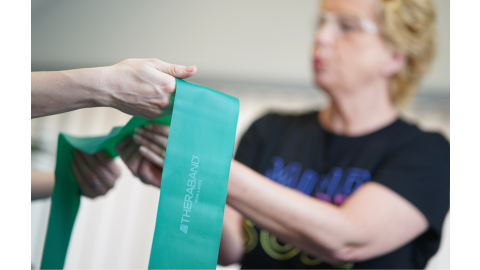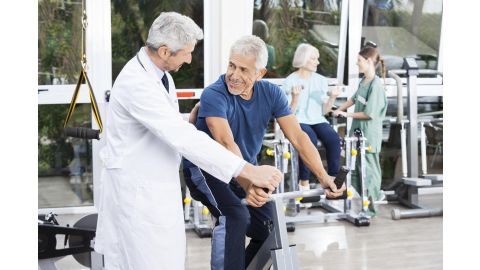Key Takeaways
- Pilates is a low-impact exercise that focuses on strengthening muscles while improving balance, flexibility, and posture.
- Partial weight-bearing exercise, such as Pilates, helps maintain bone density without the high risk of breaks or fractures.
- Ideal for older adults to rehab from surgical procedures like hip replacement or knee surgery.
- Quickly learn how you can improve core strength and balance with these 8 floor exercises!
Top Products in This Article
Recovering from an injury or living with a chronic condition can be more difficult at an older age and may result in loss of strength, mobility, and increased inactivity. Many seniors who participate in a Pilates exercise program have increased energy, decreased aches and pains, and greater confidence while moving.1 Beneficial for aging joints, Pilates is low impact and can be performed in non-weight-bearing positions.
Learn more about Pilates and its benefits to find out if it's the right exercise program for you!
What is Pilates?

Pilates is named for its creator, Joseph Pilates, who developed the exercises in the 1920s. It consists of movement patterns that stress proper posture, balanced flexibility, and strength. It can be done on a machine called a Reformer or on a yoga mat placed on the floor. The Reformer utilizes pulleys with added resistance from the participant's own body weight with graduated levels of springs.

Like yoga, Pilates encourages deep breathing. By focusing on breathing, you can achieve significant results in a shorter amount of time. In addition to focusing on breathing, it is important to perform controlled movements with ease and fluidity. Pilates exercises are not meant to be rigid - each part of the body must move in a single fluid motion.
Pilates is also designed with modifications so that people of all levels and abilities can stay safe while being physically challenged. It is a perfect exercise regimen for older adults because it does not have the impact on the body that other forms of exercise do and is not nearly as severe on the joints as most workouts. If you're wondering whether Pilates is right for you, it's important to consider what it is you're aiming to achieve.
4 Benefits of Practicing Pilates
Pilates can be integrated with rehabilitation from surgical procedures like hip replacement or knee surgery. Many of the exercises can be performed in reclining or sitting positions to aid those with limited mobility. Need more reasons to try Pilates? Here are four other benefits.
- Focuses on building a strong core. It teaches control and stability in a small range of motion, graduating to a larger range of motion as individuals gain confidence.
- Uses breathing patterns to help control each exercise, allowing you to make slow, deep inhales and exhales. This also creates a calming effect to help reduce stress.
- Promotes increased flexibility and range of motion, which puts less pressure on joints and makes for smoother movements. Focusing on how you move, Pilates can help correct muscle imbalances.
- Helps with a variety of age-related ailments such as arthritis. Gentle mid-range movements decrease the chance of joints compressing while maintaining the range of motion around them.
These benefits positively work with the aging body - targeting the powerhouse for effective exercise. The powerhouse consists of the abdomen, lower back, glutes, hamstrings and pelvic floor. Need help getting started? Try these 8 Pilates exercises at home!
8 Pilates Exercises for Seniors
Most of these Pilates exercises focus on the pelvis and trunk, utilizing both stability and mobility to train the body. It is recommended that beginners practice Pilates at least twice a week, although many people find three times a week to be more effective. If you're just starting out, go slow at first and gradually increase the intensity of your workout. It is also a good idea to consult your doctor before you start a Pilates regimen.
Forearm Plank
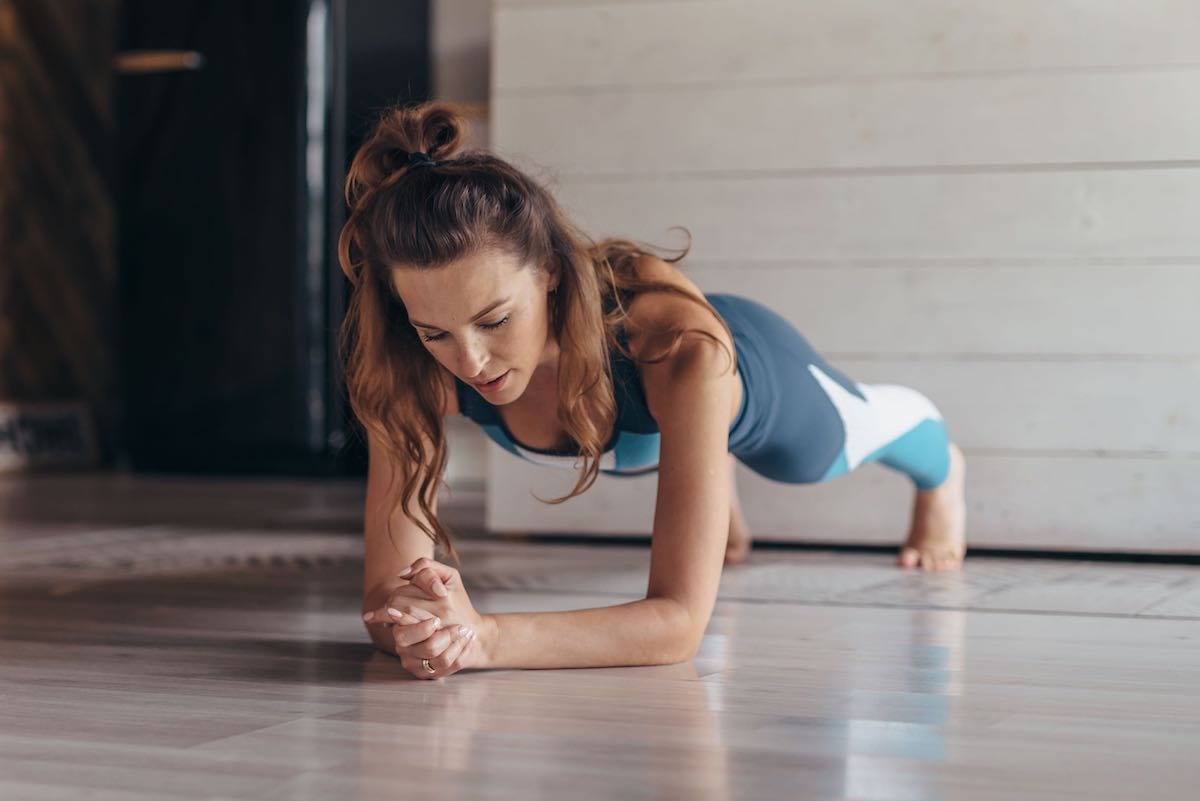
- Lie on your stomach on the floor. Position your elbows directly underneath your shoulders and forearms flat on the floor. Your legs should be resting behind you, knees hip-width apart (or slightly farther apart for balance)
- Lift your hips toward the ceiling until your body forms a straight line from head to ankles
- Squeeze your upper back, core, and glutes. Hold this position for 30 seconds before slowly returning to the floor
Bird Dog
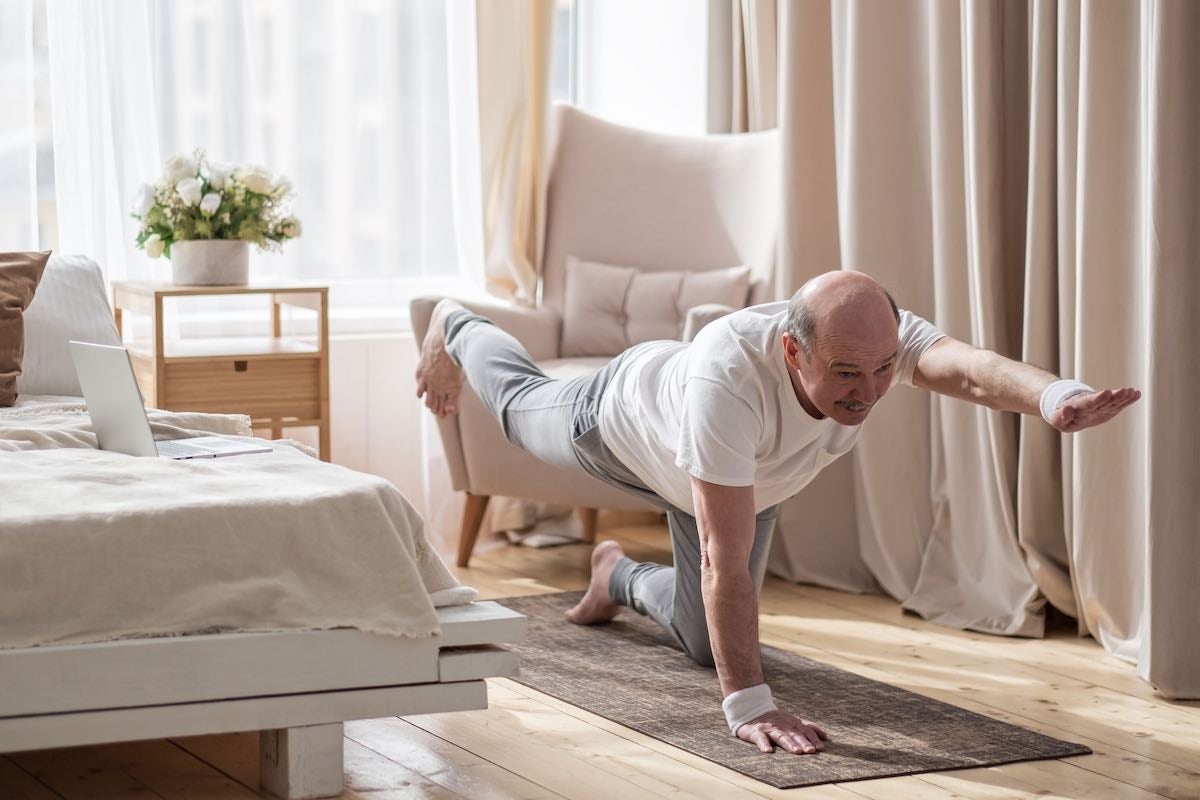
- Start on all fours with your hands below your shoulders and knees below your hips. Engage your core, keep your spine neutral, and gaze down or slightly forward
- Lift your left arm and extend your right leg until both limbs are in line with the rest of your body
- Pause for 5-10 seconds before lowering back down
- Repeat on the opposite side with your right arm and left leg extended
Saw
- Sitting on the floor with your back straight, spread your legs as wide as a yoga mat
- With your arms straight out to your sides, twist to your left. Stretch your right hand towards your left foot, pulsing three times
- Roll up in the twist, untwist, and return to center
- Repeat on the opposite side, reaching your left hand towards your right foot, pulsing three times
- Roll up in the twist, untwist, and return to center
Pelvic Curl
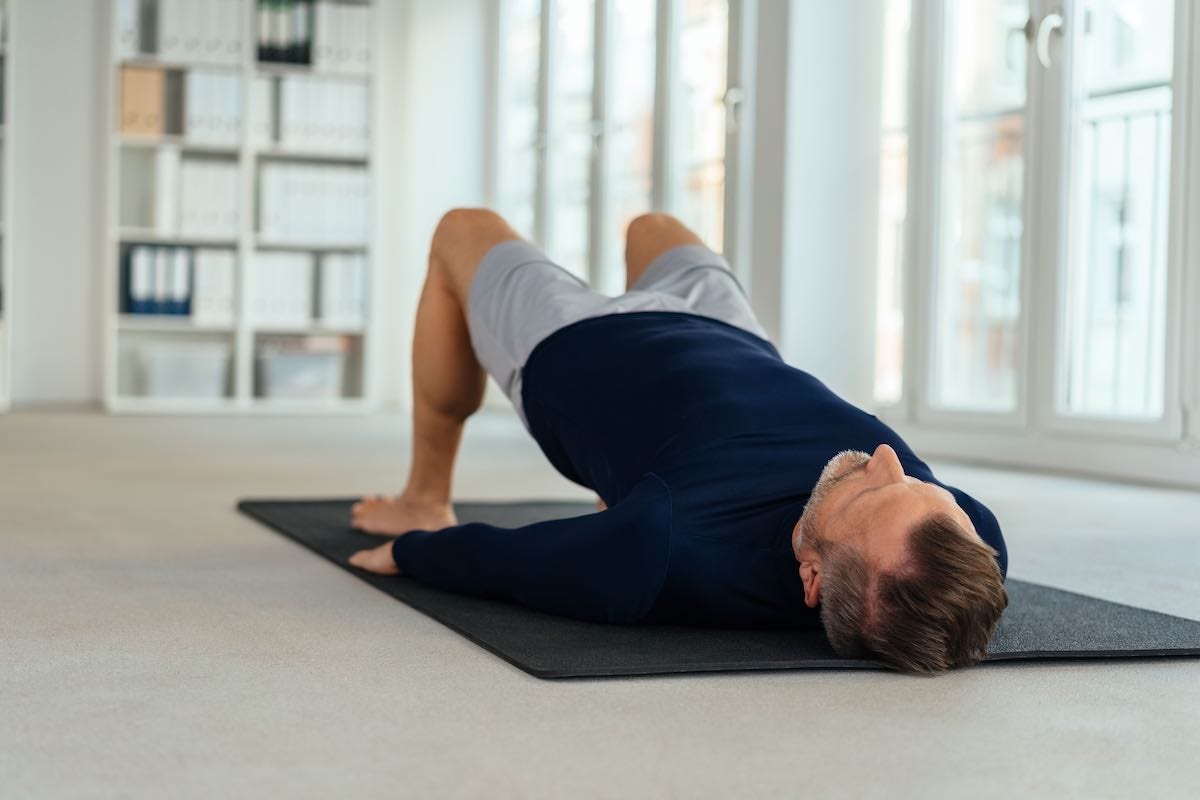
- Lie on your back with your knees bent, feet hip-width apart on the floor close to your pelvis. Press your arms onto the floor by your sides
- Curl your tailbone under and roll your spine off the floor until it is hovering slightly above the floor. Hold for 30 seconds before slowly rolling back to start
Single Leg Stretch
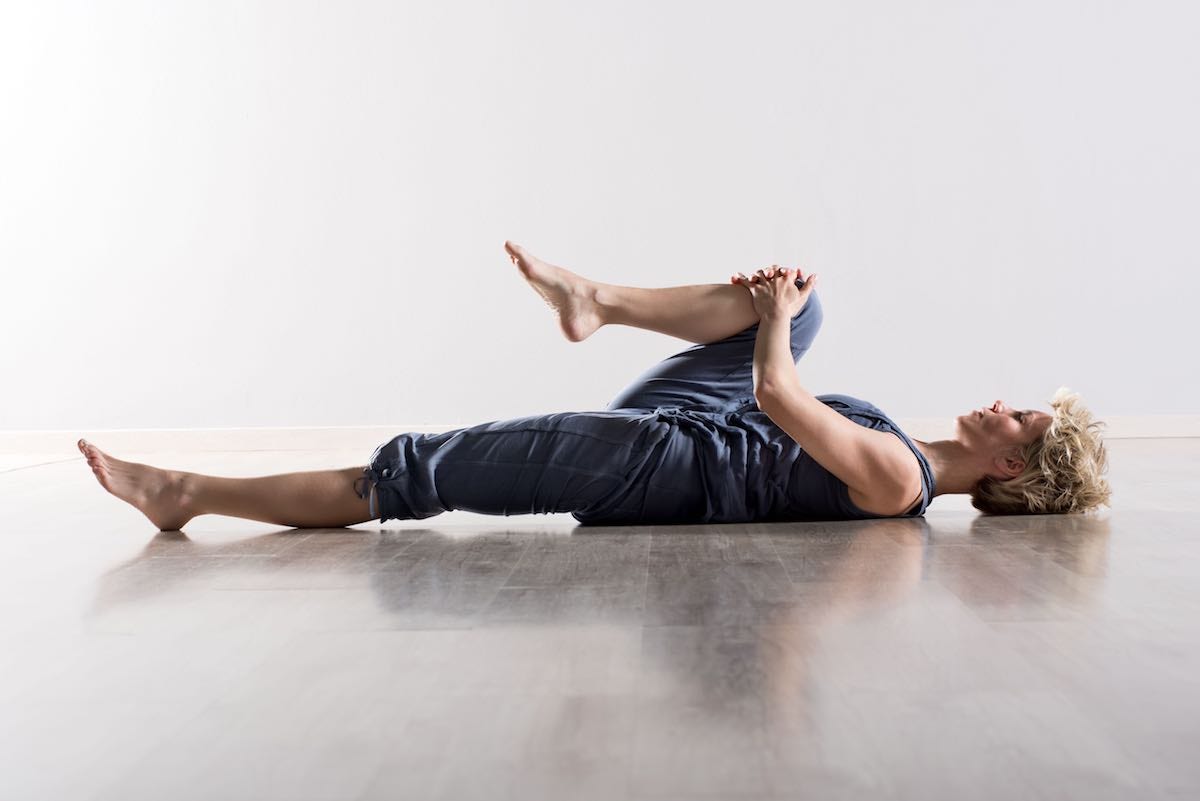
- Lying on your back, bring your legs to tabletop position (knees over hips, shins parallel to the floor). Make sure to place your hands on top of your knees
- On the exhale, place both of your hands on your right knee. Straighten and extend the left leg down to the floor. Hold this stretch for 30 seconds
- On the inhale, switch the legs. Exhale as you draw your left leg into tabletop position and straighten the right leg
- Continue to transfer your hands to the bent knee each time. Pull in one leg, as the other reaches. Try to minimize any movement in your trunk
Swimming
- Lie face-down on the floor with your arms and legs extended
- Draw your belly button into your spine and lift your right arm and left leg off the floor at the same time
- Keep your gaze down and make sure you’re pulling your shoulder blades down
- Switch sides and continue alternating for 30 seconds up to a minute
Mountain Climber
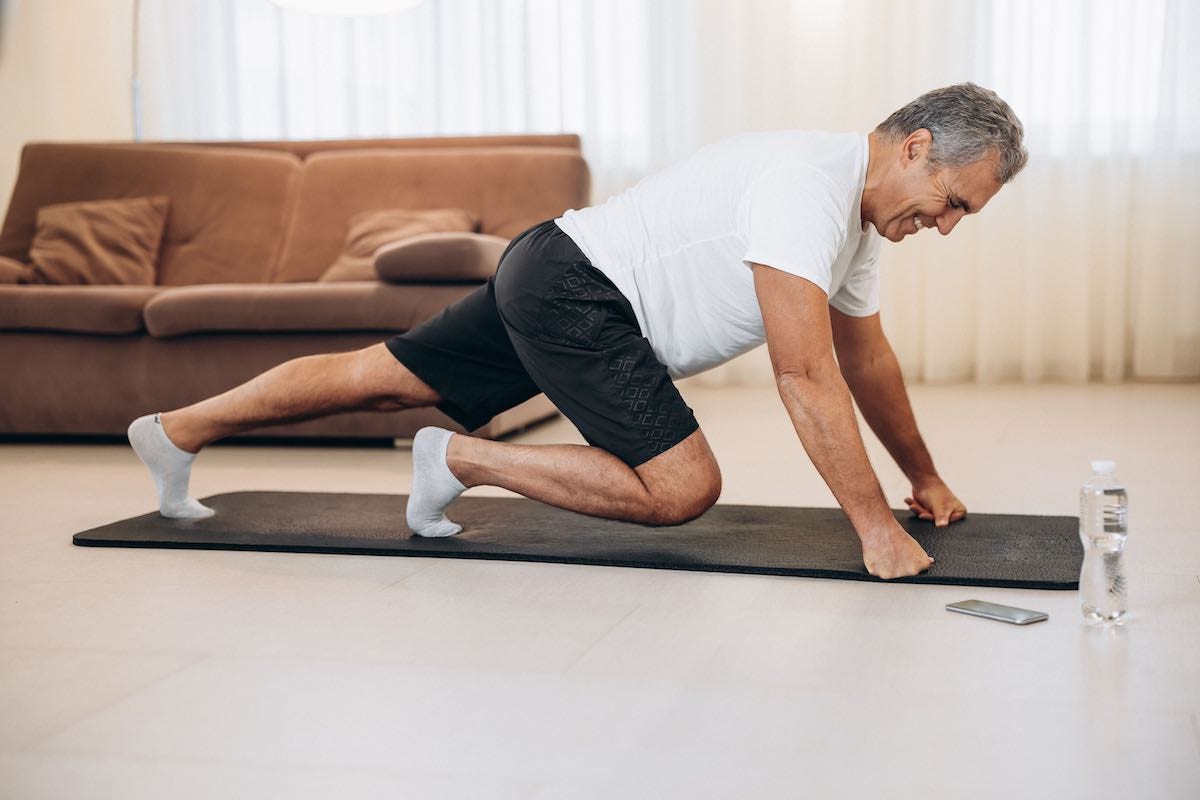
- Start in a high plank with your hands directly under your shoulders
- Bring your right knee in toward your chest. As you straighten the right leg, bring the left knee toward your chest
- Continue switching knees for 30 seconds
- Keep your core, glutes, and quads engaged to avoid rocking your hips
Teaser
- Lie faceup. Bend your knees over your hips and lift your feet off the mat
- Extend your legs as you reach your arms toward your feet and lift your head and shoulders off the mat. Aim to create a V-shape with your torso and legs
- Hold for 30 seconds, and then roll onto your back bending your knees again
If you are limited to performing exercises due to weak balance or limited mobility, try exercises in a chair! Start each exercise sitting upright and slightly away from the back of the chair, with a straight spine and both feet flat on the floor. Grab a TheraBand resistance band and follow along with the instructor! Gradually increase the duration and frequency as you feel more comfortable.
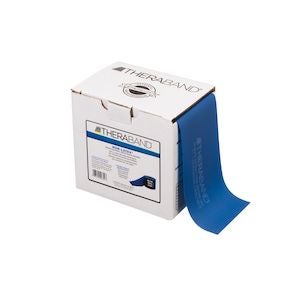
Regular exercise can be very beneficial to the physical health of elderly adults. As a person gets older, they tend to lose flexibility, endurance, and balance. This means limited mobility makes it difficult for seniors to find a suitable exercise routine. Try Pilates! It helps increase strength and balance without putting too much pressure on aging joints.
References
1. Bubb, Fiona. (2016). 7 Great Benefits of Pilates for Seniors. Elite Therapy. Retrieved from https://bit.ly/3y8GANC
2. Occhipinti, Amy. (2018). 3 Pilates Exercises for the Elderly. AFPA: Health, Nutrition & Fitness. Retrieved from https://bit.ly/2Wivb0H
3. Ogle, Marguerite. (2020). Is Pilates Good Exercise for Seniors? VeryWell Fit. Retrieved from https://bit.ly/3j66nBI
Medical Disclaimer: The information provided on this site, including text, graphics, images and other material are for informational purposes only and are not intended to substitute for professional medical advice, diagnosis or treatment. Always seek the advice of your physician or other healthcare professional with any questions or concerns you may have regarding your condition.








 France
France Australia
Australia